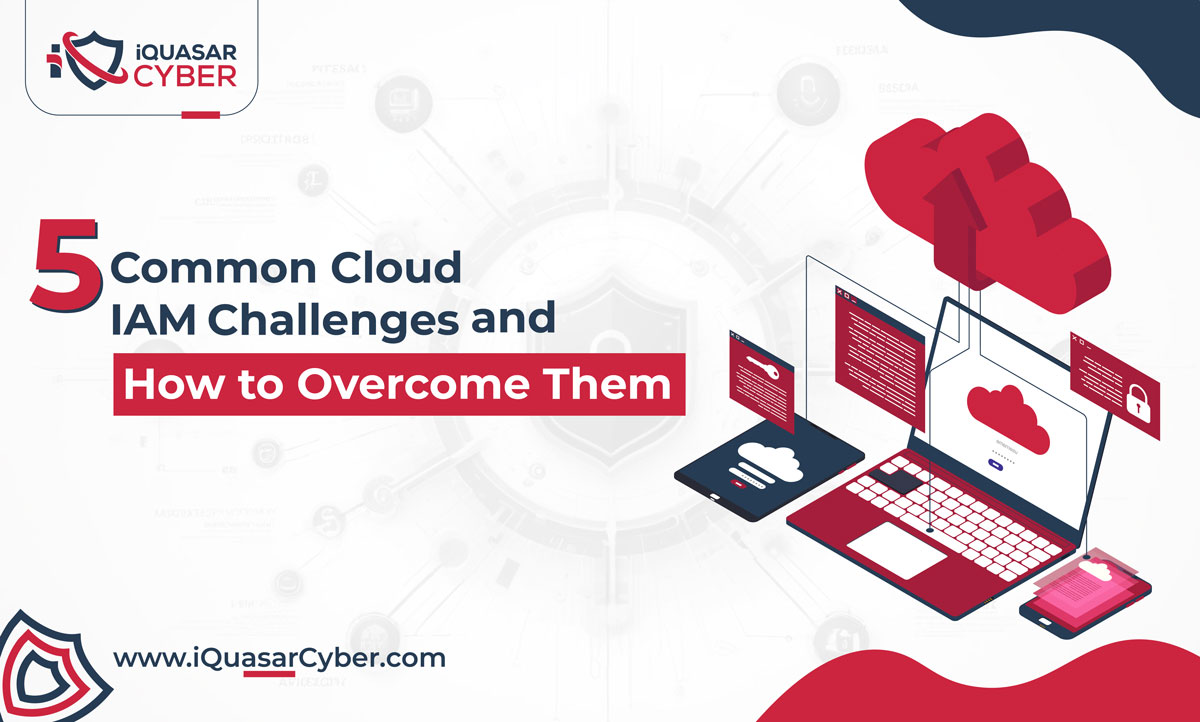
Identity and Access Management (IAM) refers to the framework of policies, technologies, and systems that ensure the right individuals and devices can access resources. IAM is crucial for managing who can access which services and data in a cloud environment.
IAM protects data, prevents unauthorized access, and ensures that an organization complies with regulatory standards. A well-managed IAM system is important as it is the backbone of cloud security. As organizations migrate to the cloud, managing identity and access becomes increasingly complex. This blog will review five common IAM challenges in cloud environments and strategies to address them.
5 Common Cloud IAM Challenges and How to Overcome Them
1. Managing Multi-Cloud Environments
Many organizations use a multi-cloud strategy, using services from different providers. Each provider offers its own IAM system, which makes managing users and permissions across different platforms complex and time-consuming.
How to Overcome: Organizations can implement a unified identity management solution to address this. Cloud-agnostic IAM tools such as Okta or Azure AD provide centralized management, allowing admins to define roles, policies, and access levels across multiple cloud environments from one dashboard. This reduces inconsistencies and simplifies governance.
2. Balancing Usability and Security
One of the major IAM challenges is striking a balance between security and ease of use. If IAM policies are too restrictive, users may bypass security measures, leading to vulnerabilities. On the other hand, overly lenient policies could expose sensitive data.
How to Overcome: Organizations should adopt a risk-based authentication system, where accessing sensitive data or using new devices requires stronger authentication, like Multi-Factor Authentication. Nonsensitive data can have a lenient policy. This adaptive approach balances user experience with robust security measures.
3. Overprivileged Access
Granting users excessive permissions beyond what they need to perform their roles is a common issue. This can lead to unintended access to sensitive data, increasing the risk of insider threats or data breaches.
How to Overcome: The solution grants users the minimum access necessary for their job roles. Regular audits of user permissions and role-based access control (RBAC) can ensure that users don’t retain outdated or unnecessary permissions. Automated tools can periodically analyze and recommend changes based on usage patterns.
4. Managing Machine Identities
With the growing number of virtual machines, containers, and microservices interacting with cloud systems, managing machine identities has become as critical as managing human identities. These entities need access to resources, which can lead to unauthorized access without proper governance.
How to Overcome: Implementing automated lifecycle management for machine identities is crucial. Tools like HashiCorp Vault or AWS IAM Roles for EC2 can manage certificates, keys, and other credentials, ensuring secure machine authentication. Additionally, machine identities should be treated with the same level of scrutiny as human identities, including regular audits, level of access, and revocation processes.
5. Ensuring Compliance with Regulations
Cloud environments are subject to various compliance standards, such as GDPR, HIPAA, or CCPA. Misconfigured IAM policies or lack of visibility into access controls can lead to non-compliance, hefty fines, and damage to reputation.
How to Overcome: Organizations should invest in compliance management tools integrated with IAM systems. These tools can continuously monitor access policies and user activity, automatically flagging violations of regulatory standards. Regular audits and automated reporting ensure cloud IAM systems comply with industry and region-specific regulations.
Conclusion
Effective IAM is vital for securing cloud environments, especially as organizations scale and embrace multi-cloud architectures. Organizations can strengthen their cloud security posture and protect their most valuable assets by overcoming the common challenges of IAM- such as managing multiple platforms, preventing overprivileged access, and ensuring compliance. Investing in cloud-native IAM tools and practices improves security and fosters agility and compliance in today’s dynamic cloud landscape.
At iQuasar Cyber Inc., we understand the complexities and challenges of implementing an IAM program. We offer various services to help organizations like yours succeed in their IAM journey. Our team of experts can help you assess your current state, develop a comprehensive strategy, select the right technology solutions and large-scale deployments, and provide employee training and awareness programs. We also offer continuous monitoring and auditing services to ensure your IAM program remains effective and up-to-date.
Contact Us Today!